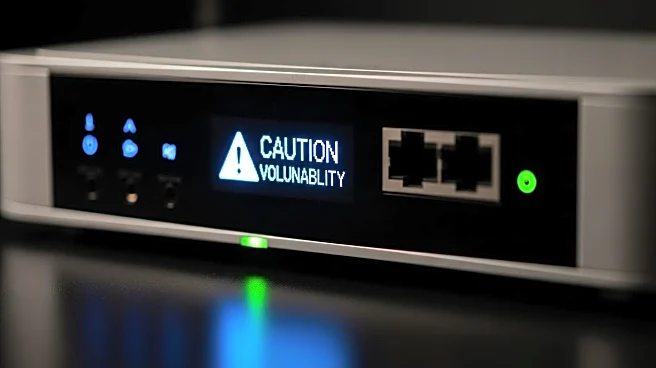What's Happening?
Cisco has issued emergency patches for two critical firewall vulnerabilities exploited as zero-days in attacks linked to the ArcaneDoor espionage campaign. The vulnerabilities, identified as CVE-2025-20333 and CVE-2025-20362, affect the VPN web server of Cisco Secure Firewall Adaptive Security Appliance (ASA) and Secure Firewall Threat Defense (FTD) software. These flaws allow remote attackers to execute arbitrary code with root privileges or access restricted URLs without authentication. The critical-severity defect requires valid VPN user credentials for exploitation, while the medium-severity one does not. Cisco discovered these vulnerabilities during an investigation into attacks targeting government organizations, where ASA 5500-X series devices were compromised. The attackers employed advanced evasion techniques, such as disabling logging and intercepting CLI commands, to prevent diagnostic analysis. Cisco has linked these attacks to the ArcaneDoor campaign, which is suspected to be operated by hackers based in China.
Why It's Important?
The exploitation of these vulnerabilities poses significant risks to U.S. cybersecurity, particularly for government organizations using affected Cisco devices. The ability of attackers to execute arbitrary code and exfiltrate data from compromised devices highlights the potential for espionage and data breaches. The urgency of the situation is underscored by the U.S. Cybersecurity and Infrastructure Security Agency (CISA) adding these vulnerabilities to its Known Exploited Vulnerabilities catalog and issuing an Emergency Directive for federal agencies to address them immediately. The directive mandates agencies to identify all Cisco ASA and Firepower devices, collect memory files for forensic analysis, and upgrade or disconnect end-of-support devices. This response aims to mitigate the immediate risk and assess the extent of compromise, emphasizing the critical need for robust cybersecurity measures to protect sensitive information.
What's Next?
Cisco advises users to update their devices promptly, as the fixed release will automatically remove the attackers' persistence mechanism. Users are also recommended to rotate all passwords, certificates, and keys following the update. The UK's National Cyber Security Centre (NCSC) has published a technical analysis of the malware involved in the attacks, urging network defenders to investigate this activity and replace vulnerable ASA 5500-X series models. CISA's directive requires federal agencies to complete forensic analysis by the end of September 26, 2025, to inform ongoing threat assessments. These actions are crucial to addressing the vulnerabilities and preventing further exploitation by the ArcaneDoor campaign.
Beyond the Headlines
The ArcaneDoor campaign's exploitation of Cisco firewall vulnerabilities raises concerns about the security of discontinued and soon-to-be-discontinued devices. The attackers' ability to tamper with device read-only memory for persistence across reboots and updates highlights the need for Secure Boot and Trust Anchor support in cybersecurity products. This incident underscores the importance of continuous monitoring and updating of security infrastructure to defend against sophisticated cyber threats. The broader implications include potential shifts in cybersecurity policies and practices, as organizations reassess their vulnerability management strategies to prevent similar attacks in the future.











